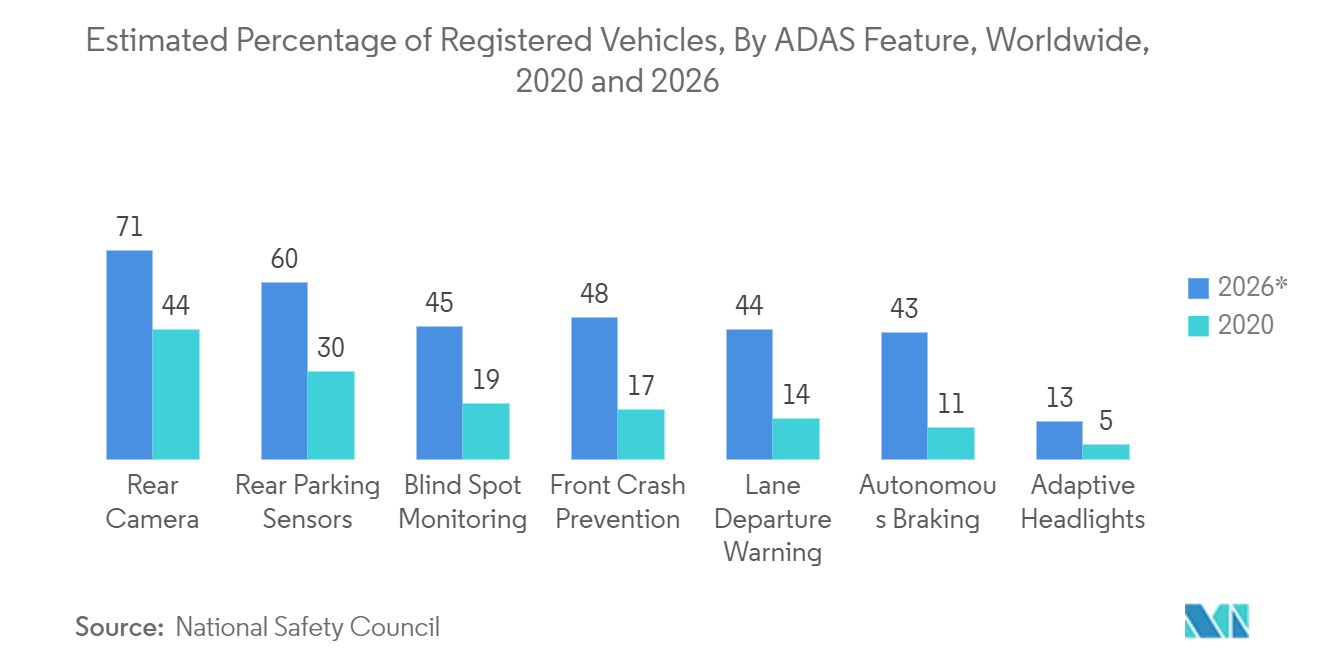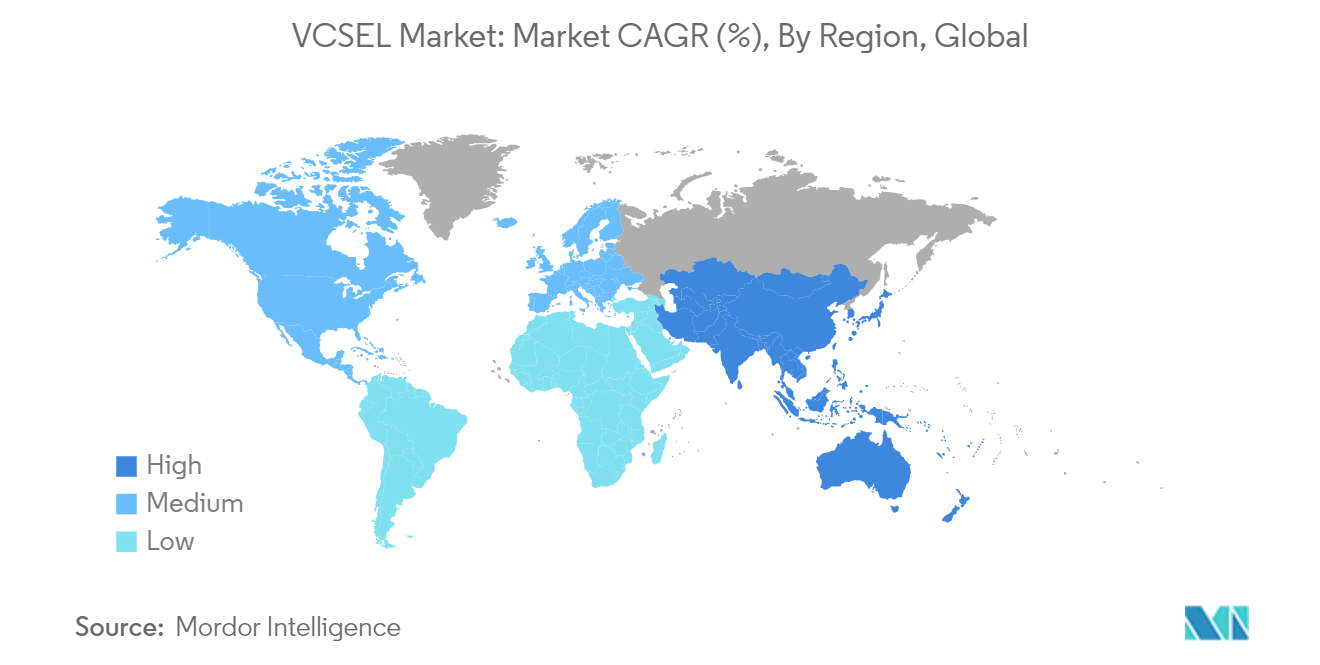Market Trends of Vertical Cavity Surface Emitting Laser Industry
ADAS and LiDAR to be the Fastest-growing Application
- The automotive industry is one of the major emerging markets for the VCSEL manufacturers, owing to trends like autonomous vehicles and high-end interior features in vehicles. Although the automotive industry has been witnessing a recession in recent years, the growing number of sensors per vehicle is mainly motivating the market vendors. Most of the market vendors are expanding their scope for the automotive market (interior and exterior applications).
- LiDAR is a critical component of ADAS, and highly efficient VCSELs, with their tiny footprint, attractive pricing, and remarkable reliability and performance, are making them suitable for ADAS LIDAR. VCSELs are used in LiDAR systems for object detection and mapping distances, exterior sensing technologies for ADAS and autonomous driving, and automotive 3D sensing for in-cabin and outside the vehicle, among others.
- In order to achieve LEVEL 4 autonomy, most of the developed and developing regions have mandated or are planning to mandate ADAS in new vehicles, which is expected to create massive growth opportunities for the market vendors. For instance, 80-90% of new vehicles in the United States have at least one ADAS feature.
- According to the National Safety Council, by 2026, approximately 71% of registered vehicles will be equipped with rear cameras, while 60% will have rear parking sensors. Such increasing adoption of ADAS would aid the growth of the market studied.
- The increasing adoption of self-driving or autonomous vehicles is a primary growth factor for the ADAS market. For instance, according to Intel, global car sales are expected to reach over 101.4 million units in 2030, and autonomous vehicles are expected to account for about 12% of car registrations by 2030.

Asia-Pacific Expected to Witness Significant Growth with China Dominating the Market
- China is expected to grow substantially in the Asia-Pacific region due to the increasing adoption of VCSEL in the automotive, healthcare, and consumer electronics industries.
- China is one of the prominent consumer electronics producers across the world. The manufacturing industry is rapidly growing in the region and is witnessing the deployment of various manufacturing and telecommunications technologies, which is expected to aid in the market's growth.
- Due to the continued flow of global, diversified electronics equipment into China, the consumption of semiconductors in China is growing faster than in others. Three of the world's top five most prominent mobile phone companies are based in this country, which presents enormous opportunities for adopting semiconductors.
- The Chinese government is also working to create a techno-authoritarian state powered by artificial intelligence and sensors to track and monitor its citizens. The demand for market studied in the country is expected to grow with such programs. The Chinese government's "Made in China 2025" initiative aims to make its semiconductor industry reach USD 305 billion in output by 2030 and meet 80% of domestic demand. Such instances are estimated to boost the market's growth in the country.
- Major players focus on developing innovative products to strengthen their market positions. For instance, in September 2023, Berxel Photonics, a pioneer in VCSEL semiconductor R&D and manufacturer of high-speed optical communications VCSELs and 3D depth cameras, announced a live demo of its 106 Gbps VCSEL-powered 800G transceiver in China International Optoelectronic Exposition in Shenzhen, China.
- Another factor contributing to the growth of VCSEL is the growing adoption of electric vehicles. For example, this technology is anticipated to be used in the vehicle industry for applications like recognition of gestures, driver monitoring, and autonomous driving sensors. In this region, the auto industry is growing at an excellent rate. The demand for custom semiconductors and sensors is increasing in the area. Therefore, VCSEL technology is expected to play a significant role in the region. As per CAAM, 589,000 battery-electric vehicles were made in China in August 2023, with 551,000 passenger BEVs and 38,000 business BEVs. In the same month, 254,000 PHEVs were produced in China, of which 253,000 were passenger PHEVs, and 1,000 were commercial PHEVs.
- The Chinese government views its automotive industry, including the auto parts sector, as one of its pillar industries. The government expects China's automobile output to reach 35 million units by 2025. Such instances show that the market is anticipated to grow over the forecast period.


